Postmaster General of the United Kingdom
Former cabinet position in the British government From Wikipedia, the free encyclopedia
Postmaster General of the United Kingdom was a Cabinet ministerial position in HM Government. Aside from maintaining the postal system, the Telegraph Act 1868 established the Postmaster General's right to exclusively maintain electric telegraphs. This would subsequently extend to telecommunications and broadcasting.
| Postmaster General of the United Kingdom | |
|---|---|
 | |
| Style | Postmaster General |
| Appointer | Monarch of the United Kingdom on advice of the Prime Minister |
| Precursor | Master of the King's Post |
| Formation | 1517 |
| First holder | Brian Tuke as Master of the King’s Post |
| Final holder | John Stonehouse |
| Abolished | 1 October 1969 |
| Succession | Overseen by the following: Department of Trade and Industry (1974–2007) Department for Business, Energy and Industrial Strategy (2007–2015) Home Office (1974–92) Department for Culture, Media and Sport (1992– ) |
The office was abolished in 1969 by the Post Office Act 1969. A replacement public corporation, governed by a chairman, was established under the name of the Post Office (later subsumed by Royal Mail Group). The cabinet position of Postmaster General was replaced by a Minister of Posts and Telecommunications, with reduced powers, until 1974; most regulatory functions have now been delegated to the Secretary of State for Culture, Media and Sport, although Royal Mail Group was overseen by the Secretary of State for Business, Energy and Industrial Strategy before flotation.
History
Summarize
Perspective
In England, the monarch's letters to his subjects are known to have been carried by relays of couriers as long ago as the 15th century. The earliest mention of Master of the Posts is in the King's Book of Payments where a payment of £100 was authorised for Brian Tuke as master of the posts in February 1512.[1] Belatedly, in 1517, he was officially appointed to the office of Governor of the King's Posts, a precursor to the office of Postmaster General of the United Kingdom, by Henry VIII.[2] In 1609 it was decreed that letters could only be carried and delivered by persons authorised by the Postmaster General.[3]
In 1655 John Thurloe became Postmaster-General, a post he held until he was accused of treason and arrested in May 1660.[4] His spies were able to intercept mail, and he exposed Edward Sexby's 1657 plot to assassinate Cromwell and captured would-be assassin Miles Sindercombe and his group. Ironically, Thurloe's own department was also infiltrated: his secretary Samuel Morland became a Royalist agent and in 1659 alleged that Thurloe, Richard Cromwell and Sir Richard Willis - a Sealed Knot member turned Cromwell agent - were plotting to kill the future King Charles II. About forty years after his death, a false ceiling was found in his rooms at Lincoln's Inn, the space was full of letters seized during his occupation of the office of Postmaster-General. These letters are now at the Bodleian Library.[5]
In 1657 an act of the Commonwealth Parliament, entitled 'Postage of England, Scotland and Ireland Settled', set up a system for the British Isles and enacted the position of Postmaster General. The act also reasserted the postal monopoly for letter delivery and for post horses. After the Restoration in 1660, a further act, the Post Office Act 1660 (12 Cha. 2. c. 35), confirmed this and the post of Postmaster-General, the previous Cromwellian act being void.

1660 saw the establishment of the General Letter Office, which would later become the General Post Office (GPO).[3] A similar position evolved in the Kingdom of Scotland prior to the 1707 Act of Union.
| Postmaster-General Act 1831 | |
|---|---|
| Act of Parliament | |
 | |
| Long title | An Act for enabling His Majesty to appoint a Postmaster General for the United Kingdom of Great Britain and Ireland. |
| Citation | 1 Will. 4. c. 8 |
| Dates | |
| Royal assent | 11 March 1831 |
| Commencement | 11 March 1831 |
| Other legislation | |
| Repealed by | Post Office (Repeal of Laws) Act 1837 |
Status: Repealed | |
| Text of statute as originally enacted | |
The Postmaster-General Act 1831 (1 Will. 4. c. 8) established the unified office of Postmaster General of the United Kingdom
The office was abolished in 1969 by the Post Office Act 1969.[3] A new public corporation, governed by a chairman, was established under the name of the Post Office (the part later subsumed by Royal Mail), which also had responsibility for telecommunications and the Girobank). The cabinet position of Postmaster General was initially replaced by a Minister of Posts and Telecommunications with less direct involvement; this department was dissolved in March 1974,[6] with regulatory functions transferring to the Home Office, the Post Office retaining control of television licensing. Since 1992, most regulatory functions formerly conducted by the Postmaster General generally fall within the remit of the Secretary of State for Culture, Media and Sport, although the present-day Royal Mail Group was overseen by the Secretary of State for Business, Energy and Industrial Strategy until flotation.
Masters of the King's Post
| Years | Master of the King's Post |
|---|---|
| 1517–1545 | Brian Tuke |
| 1545–1566 | John Mason |
| 1566–1590 | Thomas Randolph |
| 1590–1607 | John Stanhope, 1st Baron Stanhope |
| 1607–1635 | Charles Stanhope, 2nd Baron Stanhope |
| 1637–1642 | Philip Burlamachi |
| 1642–1649 | Edmund Prideaux |
Postmaster under the Commonwealth
| Years | Postmaster under the Commonwealth |
|---|---|
| 1649–1653 | Edmund Prideaux |
| 1653–1655 | John Manley[7] |
| 1655–1660 | John Thurloe |
Postmasters General of England, Great Britain, and the United Kingdom
Summarize
Perspective
The earliest postmasters had responsibility for England and Wales. In 1707, on the Union with Scotland, the responsibility of the office was extended to cover the whole of the new Kingdom of Great Britain as well as Ireland, but with some powers held by a Post Office Manager for Scotland. By the Post Office (Revenues) Act 1710, with effect from 1711, the services were united, but with a Deputy Postmaster for Scotland. From 1784, there were also Postmasters General of Ireland, but under the Postmaster-General Act 1831, the postmasters based at Westminster became responsible for the whole of the United Kingdom of Great Britain and Ireland.[8] In 1922, the Irish Free State became independent, and in 1923 it established its own arrangements under a Postmaster General of the Irish Free State. In 1924 the title became Minister for Posts and Telegraphs.
| Years | Postmaster General |
|---|---|
| 1660–1663 | Henry Bishop |
| 1663–1664 | Daniel O'Neill |
| 1664–1667 | Katherine O'Neill, Countess of Chesterfield |
| 1667–1685 | Henry Bennet, 1st Earl of Arlington |
| 1686–1689 | Laurence Hyde, 1st Earl of Rochester |
| 1689–1691 | John Wildman |
Two Postmasters General, 1691–1823
From 1691 to 1823 there were two Postmasters General, to divide the patronage between the Whigs and Tories.
A single Postmaster General, 1823–1900
In 1823 the idea of a Whig and a Tory sharing the post was abolished.[9]
Postmaster General, 1900–1969
| Portrait | Name (Birth–Death) |
Term of office | Party | Ministry | ||
|---|---|---|---|---|---|---|
 |
Charles Vane-Tempest-Stewart, 6th Marquess of Londonderry (1852–1915) [10] |
10 April 1900 (in Cabinet from 2 November 1900) |
8 August 1902 | Conservative | Salisbury IV | |
 |
Austen Chamberlain MP for East Worcestershire (1863–1937) [10] |
8 August 1902 | 6 October 1903 | Conservative | Balfour | |
 |
Edward Stanley, Lord Stanley MP for Westhoughton (1865–1948) [10] |
6 October 1903 | 10 December 1905 | Conservative | ||
 |
Sydney Buxton MP for Poplar (1853–1934) [10] |
10 December 1905 | 14 February 1910 | Liberal | Campbell-Bannerman | |
| Asquith I | ||||||
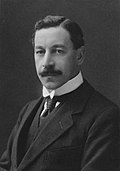 |
Herbert Samuel MP for Cleveland (1870–1963) [10] |
14 February 1910 | 11 February 1914 | Liberal | Asquith II | |
| Asquith III | ||||||
 |
Charles Hobhouse MP for Bristol East (1862–1941) [10] |
11 February 1914 | 25 May 1915 | Liberal | ||
 |
Herbert Samuel MP for Cleveland (1870–1963) [10] |
26 May 1915 | 18 January 1916 | Liberal | Asquith Coalition (Lib.–Con.–et al.) | |
 |
Joseph Pease MP for Rotherham (1860–1943) [10] |
18 January 1916 | 5 December 1916 | Liberal | ||
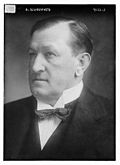 |
Albert Illingworth MP for Heywood until 1918 MP for Heywood and Radcliffe from 1918 (1865–1942) |
10 December 1916 | 1 April 1921 | Liberal | Lloyd George I | |
| Lloyd George II | ||||||
 |
Frederick Kellaway MP for Bedford (1870–1933) |
1 April 1921 | 19 October 1922 | Liberal | ||
 |
Neville Chamberlain MP for Birmingham Ladywood (1869–1940) |
31 October 1922 | 12 March 1923 | Conservative | Law | |
 |
Sir William Joynson-Hicks, Bt. MP for Twickenham (1865–1932) |
12 March 1923 | 28 May 1923 | Conservative | ||
| Baldwin I | ||||||
 |
Sir Laming Worthington-Evans, Bt. MP for Colchester (1868–1931) [10] |
28 May 1923 | 22 January 1924 | Conservative | ||
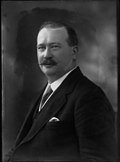 |
Vernon Hartshorn MP for Ogmore (1872–1931) [10] |
22 January 1924 | 11 November 1924 | Labour | MacDonald I | |
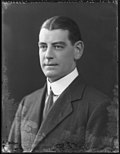 |
Sir William Mitchell-Thomson MP for Croydon South (1877–1938) |
11 November 1924 | 7 June 1929 | Conservative | Baldwin II | |
| Hastings Lees-Smith MP for Keighley (1878–1941) |
7 June 1929 | 2 March 1931 | Labour | MacDonald II | ||
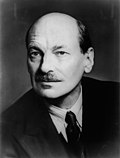 |
Clement Attlee MP for Limehouse (1883–1967) |
2 March 1931 | 3 September 1931 | Labour | ||
 |
William Ormsby-Gore MP for Stafford (1895–1964) |
3 September 1931 | 10 November 1931 | Conservative | National I (N.Lab.–Con.–et al.) | |
 |
Sir Kingsley Wood MP for Woolwich West (1881–1943) [11] |
10 November 1931 | 7 June 1935 | Conservative | ||
| National II | ||||||
 |
George Tryon MP for Brighton (1871–1940) |
7 June 1935 | 3 April 1940 | Conservative | National III (Con.–N.Lab.–et al.) | |
| National IV | ||||||
| Chamberlain War | ||||||
 |
William Morrison MP for Cirencester and Tewkesbury (1893–1961) |
3 April 1940 | 7 November 1943 | Conservative | ||
| Churchill War (All parties) | ||||||
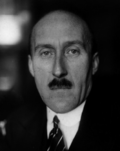 |
Harry Crookshank MP for Gainsborough (1893–1961) |
7 November 1943 | 4 August 1945 | Conservative | ||
| Churchill Caretaker (Con.–Lib.N.) | ||||||
| The Earl of Listowel (1906–1997) |
4 August 1945 | 17 April 1947 | Labour | Attlee I | ||
 |
Wilfred Paling MP for Wentworth (1883–1971) |
17 April 1947 | 28 February 1950 | Labour | ||
| Ness Edwards MP for Caerphilly (1897–1969) |
28 February 1950 | 5 November 1951 | Labour | Attlee II | ||
 |
The Earl De La Warr (1900–1976) |
5 November 1951 | 7 April 1955 | Conservative | Churchill III | |
| Charles Hill MP for Luton (1904–1989) |
7 April 1955 | 16 January 1957 | National Liberal | Eden | ||
| Ernest Marples MP for Wallasey (1907–1978) |
16 January 1957 | 22 October 1959 | Conservative | Macmillan I | ||
| Reginald Bevins MP for Liverpool Toxteth (1908–1996) |
22 October 1959 | 19 October 1964 | Conservative | Macmillan II | ||
| Douglas-Home | ||||||
 |
Tony Benn MP for Bristol South East (1925–2014) |
19 October 1964 | 4 July 1966 | Labour | Wilson I | |
| Wilson II | ||||||
| Edward Short MP for Newcastle upon Tyne Central (1912–2012) |
4 July 1966 | 6 April 1968 | Labour | |||
| Roy Mason MP for Barnsley (1924–2015) |
6 April 1968 | 1 July 1968 | Labour | |||
 |
John Stonehouse MP for Wednesbury (1925–1988) |
1 July 1968 | 1 October 1969 | Labour | ||
Minister of Posts and Telecommunications, 1969-1974
| Portrait | Name (Birth–Death) |
Term of office | Party | Ministry | ||
|---|---|---|---|---|---|---|
 |
John Stonehouse MP for Wednesbury (1925–1988) |
1 October 1969 | 19 June 1970 | Labour | Wilson II | |
 |
Christopher Chataway MP for Chichester (1931–2014) |
24 June 1970 | 7 April 1972 | Conservative | Heath | |
| John Eden MP for Bournemouth West (1925–2020) |
7 April 1972 | 4 March 1974 | ||||
See also
- Postmaster General (disambiguation)
- Postmasters General of Ireland
- Postmaster General for Scotland
- Postmaster and Deputy Postmaster for Canada 1763–1851 – who reported to the Postmaster General of the United Kingdom
- Postmaster General of Canada
- Postmaster General of Hong Kong – created in 1870 to replace the Royal Mail and under British administration until 1 July 1997
References
External links
Wikiwand - on
Seamless Wikipedia browsing. On steroids.

